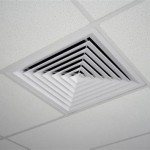Drop Ceiling vs Suspended Floor: Choosing the Right Option for Your Project
When designing or renovating a space, the choice of ceiling and floor systems is a crucial decision that significantly impacts the aesthetics, functionality, and overall design. The two primary options for these elements are drop ceilings and suspended floors. While both offer benefits and drawbacks, understanding their key differences is essential for selecting the most appropriate option for a specific project. This article aims to provide a comprehensive comparison of drop ceilings and suspended floors, highlighting their strengths and weaknesses to guide informed decision-making.
1. Installation and Cost
One of the primary considerations is the installation process and associated costs. Drop ceilings are generally easier and quicker to install than suspended floors. They involve attaching a grid system to the existing ceiling and suspending panels from it. This simplicity translates into lower labor costs and shorter installation times. Suspended floors, on the other hand, require a more complex installation process that involves constructing a subfloor system below the existing floor. This process involves laying a framework of beams and joists and attaching panels or tiles to this structure. The complexity of the installation process for suspended floors often translates into higher costs, particularly in terms of labor and materials.
The cost difference between the two systems can vary significantly depending on the specific materials, complexity of the installation, and the size of the project. Generally, drop ceilings are more affordable than suspended floors, making them a cost-effective option for projects with tighter budgets.
2. Flexibility and Accessibility
Drop ceilings offer excellent flexibility and accessibility for running utilities and maintenance. The space between the existing ceiling and the drop ceiling panels provides easy access for electrical wiring, plumbing, HVAC ductwork, and other utilities. This accessibility makes it simple to add or modify these systems in the future without disrupting the ceiling itself. Furthermore, the panels of a drop ceiling can be readily removed for easy access to the space above, facilitating maintenance operations.
Suspended floors also offer some degree of accessibility, but it is typically limited compared to drop ceilings. The space beneath the suspended floor can be utilized for wiring and plumbing, but accessing this space for repairs or modifications can be more challenging.
3. Aesthetics and Design
The aesthetic appeal of drop ceilings and suspended floors is a significant consideration for many projects. Drop ceilings offer a wide range of panel materials, colors, and designs, allowing for greater creative flexibility. They can be customized to match any desired style, whether modern, traditional, or contemporary. Suspended floors, on the other hand, typically offer more limited options in terms of aesthetics. While they can be made with various materials, the design possibilities are often restricted by the structural requirements of the subfloor system.
When considering acoustics, suspended floors generally offer better sound absorption than drop ceilings. This is because the space beneath the suspended floor can be filled with sound-absorbing materials like insulation or acoustic tiles. Drop ceilings, on the other hand, can contribute to noise reverberation if proper soundproofing measures are not taken.
Ultimately, the choice between a drop ceiling and a suspended floor depends on the specific project requirements, budget, and design preferences. Factors such as the intended use of the space, accessibility requirements, and aesthetic considerations should all be carefully weighed before making a final decision.

General Guideline Of Raised Floor And Suspended Ceiling In Data Center

False Ceiling Vs Suspended Galaxy Insulation

Ceilings 101 Drop Ceiling Vs Drywall Elegant Walls

Drop Ceilings Birmingham Al Suspended Ceiling Or Drywall

Drop Ceiling Wait What S That Suspended Ceilings Qld

Installing Woodhaven Planks And Hiding Drop Ceiling Grid Sawdust Girl

Dropped Suspended Grid Ceiling Design Ideas Advantages Disadvantages

Benefits Of Suspended Ceilings Flooring Supply Blog

What Is A Suspended Ceiling

Installing A Drop Ceiling An Alternative To Popcorn Removal
Related Posts








